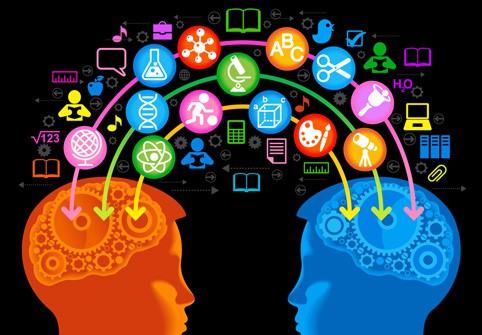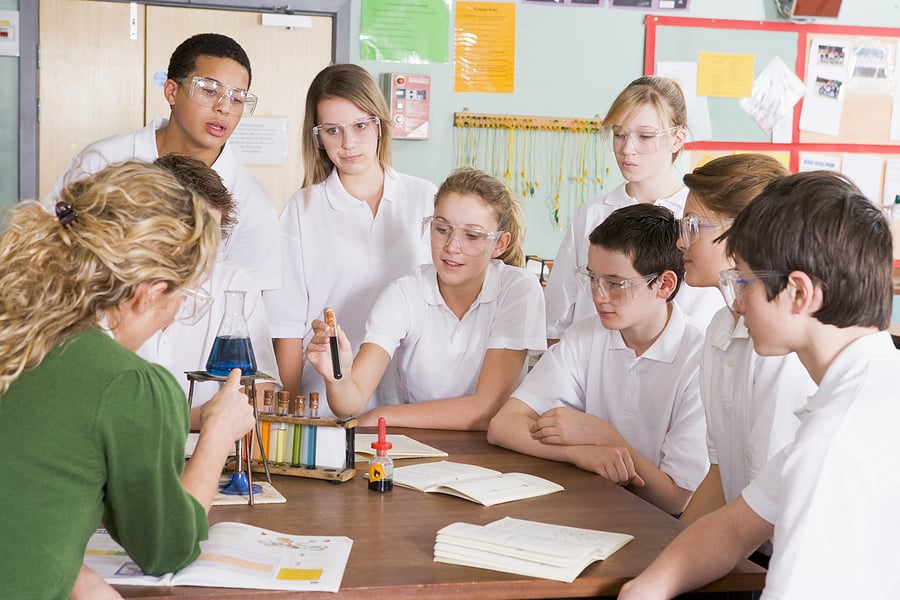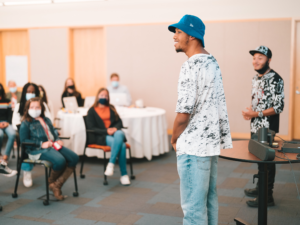4 Ways to Empower Students Through Collaboration

By Andrew K. Miller

If you want students to collaborate it is imperative that educators establish this as a norm at the beginning of the school year. Great teachers leverage group work and collaborative activities and projects in their curriculum and instruction, but oftentimes teachers “push-back” with the difficulties of having their students collaborate. I agree, it is a daunting task, but I always respond, “How have you taught them to collaborate and providing scaffolding of that skill?” This is the key! If you want your students to collaborate effectively, you must give the opportunity to do so, as well as give the necessary instruction in skills and scaffolding.
Team Building: Most teachers take time at the beginning of the to do team building activities to create a community in their classroom. These are great activities that can be intentionally tied to creating a culture of collaboration. Have students participate in an activity like the “Human Knot,” and then reflect individually and in a discussion about the effective and non effective ways they collaborated. After many activities like this, have students create or co-create the norms for collaboration in the classroom. When students create the norms, through reflective activities, they are more likely to own them.
Explicit Instruction: Teachers must model good collaboration. There are many ways to do that. Perhaps you get a group of teachers together and do a fishbowl activity where students watch for effective collaboration. Another lesson might be watching videos of examples and non examples of teams working together to analyze the best ways for students to collaborate. To build authenticity, consider bringing in adults from a variety of fields to share how they collaborate. Through this and other activities, teachers can give explicit attention to the collaboration in the instructional design and build the relevance for the skill itself.
Technology: There are many tools out there that can help foster a culture of collaboration. Whether Edmodo, TitanPad, or Twitter, use technology tools to push students thinking of what it means to collaborate. In addition, you the teacher now have documentation of that collaboration that can be used in the assessment process. Make you choose the best times to use these tools throughout curriculum, but also model and teach students how to use the tool. Teaching collaboration through technology can help build the 21st Century skill of Digital Citizenship. In fact, collaboration is leveraged in the ISTE NETS for Students, further espousing collaboration as critical in person as well as digitally.
Assessment: Coupled with instruction, collaboration must be assessed along with the content in the class. This leverages this as a true 21st Century Skill that is transferable across content and tasks. Using rubrics for collaboration, teachers gave give focused feedback to students on what they are doing well, and how to improve. As 21st century skills like collaboration gain more and more clout, they can be included in the grade-book, as a standard to be met and built upon. Great schools are assessing not only critical content, but also collaboration as crucial to student achievement.
As educators plan for the next year, it is critical that they use some of the strategies above, as well as others, to create a culture of collaboration. Through intentional instruction and scaffolding, we can set our students up for a successful year of collaboration with their teachers, their peers, and experts in the field. We can empower our kids to be effective collaborators in and outside of school!
Andrew K. Miller (@betamiller on Twitter) is on the National Faculty for the Buck Institute for Education, an organization specializing in 21st century project-based learning, as well as for ASCD, providing expertise in a variety of professional development needs. He is also a regular blogger for Edutopia.
Photo courtesy of BigStock.






Marissa Lowman
GatherEducation is also a great tool for student collaboration online via a virtual platform.
Mike Byster
As an educator myself, I have spent my entire career finding ways to keep children engaged and having fun while learning. So far I have been successful in accomplishing this with my math and memory system I invented called Brainetics (http://www.brainetics.com). It is a system that helps train kids brains to be more efficient at math and the game-like format keeps the kids engaged and having fun. It is very important to me that children enjoy learning and I think it is the number one way to keep them engaged.
Great article,
Mike Byster
http://www.mikebyster.com
Educator, Inventor of Brainetics, Author of Genius, Mathematician